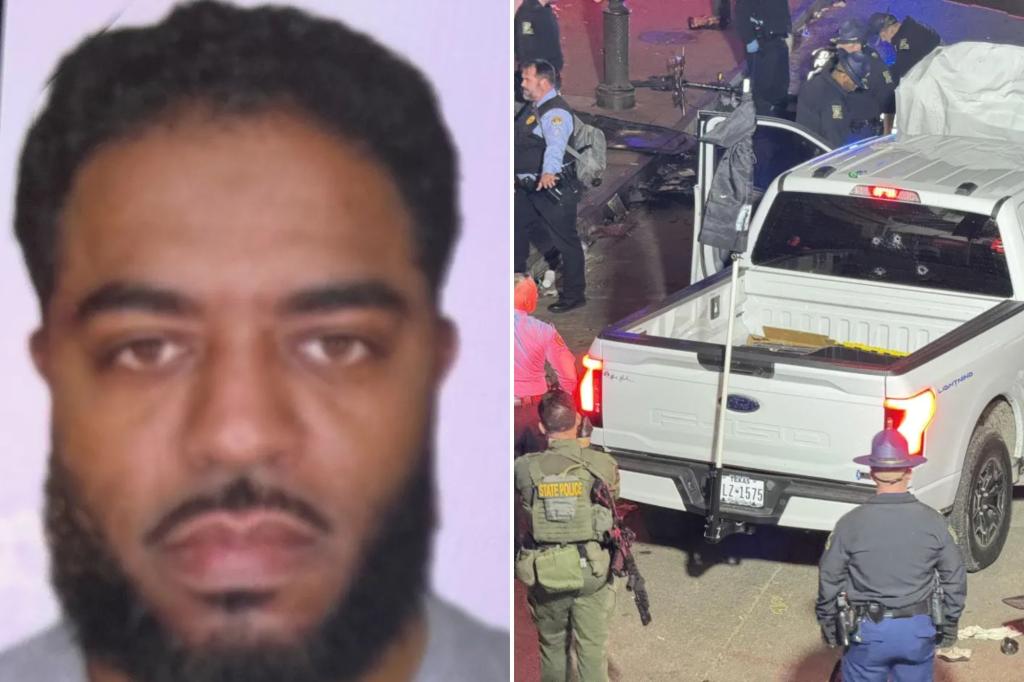The horrific events of New Year’s Day 2024 in New Orleans, Louisiana, left an indelible scar on the city’s vibrant spirit. A deliberate act of vehicular terror, perpetrated by 42-year-old Shamsud Din Jabbar, transformed a festive celebration into a scene of carnage, claiming the lives of ten individuals and injuring thirty-five others. The attack unfolded in the heart of the city’s historic French Quarter, specifically on the iconic Bourbon Street, renowned for its lively nightlife and bustling crowds. As revelers gathered to usher in the new year, Jabbar’s truck became a weapon of mass destruction, plowing through unsuspecting pedestrians, leaving a trail of devastation in its wake.
The attack, which occurred shortly after 3:00 a.m., sent shockwaves through the city and the nation. The festive atmosphere was instantly shattered, replaced by chaos, panic, and the piercing sounds of sirens. Witnesses recounted scenes of horror, describing bodies strewn across the street and the cries of the injured echoing through the night. The immediate aftermath was a blur of frantic activity as first responders raced to the scene, tending to the wounded and transporting them to local hospitals. The sheer scale of the tragedy quickly overwhelmed medical facilities, with doctors and nurses working tirelessly to save lives.
Shamsud Din Jabbar’s motive remains a subject of intense scrutiny. While investigations are still underway, preliminary reports suggest a possible link to extremist ideologies. Law enforcement sources have revealed that Jabbar’s truck bore a flag resembling that of the Islamic State of Iraq and Syria (ISIS), raising concerns about a potential terrorist connection. This discovery has intensified the investigation, with authorities delving into Jabbar’s background, affiliations, and any online activity that might shed light on his radicalization and the planning of the attack. The presence of the flag has also prompted broader discussions about the ongoing threat of domestic terrorism and the need for enhanced vigilance.
The swift response of law enforcement officers prevented further bloodshed. Within moments of the attack, officers engaged Jabbar in a firefight, ultimately neutralizing the threat and preventing additional casualties. Their bravery and decisive action undoubtedly saved lives, bringing a swift end to the reign of terror that had gripped the city. The officers involved were hailed as heroes, their courage and professionalism preventing what could have been an even greater tragedy. The incident also underscored the importance of effective training and preparedness for law enforcement agencies in responding to such unpredictable and violent events.
The New Orleans attack serves as a stark reminder of the vulnerability of public spaces and the ever-present threat of terrorism. The incident has sparked renewed calls for enhanced security measures in crowded areas, particularly during large-scale events and celebrations. Discussions are underway regarding the implementation of stricter crowd control measures, increased surveillance, and the use of physical barriers to prevent vehicular attacks. The balance between security and maintaining the vibrancy and accessibility of public spaces remains a complex challenge.
The tragedy in New Orleans has left a deep wound on the city’s soul. The loss of life, the physical and emotional trauma suffered by the injured, and the collective sense of shock and grief have reverberated throughout the community. In the wake of the attack, the city has come together to mourn the victims and offer support to those affected. Vigils have been held, memorials established, and fundraising efforts launched to assist the families of the deceased and those recovering from their injuries. The resilience and unwavering spirit of New Orleans will undoubtedly be instrumental in the long and arduous process of healing and rebuilding. The incident serves as a sombre reminder of the importance of unity, compassion, and the enduring human spirit in the face of tragedy.

